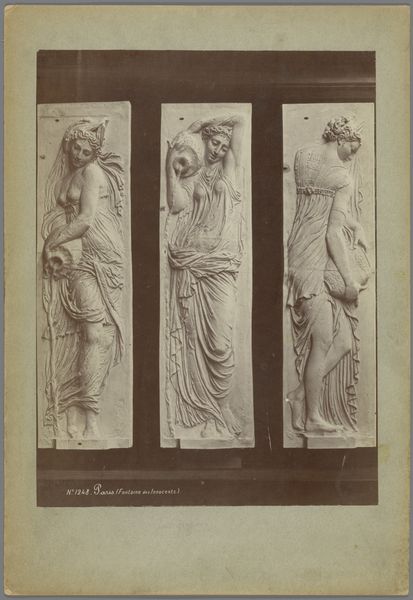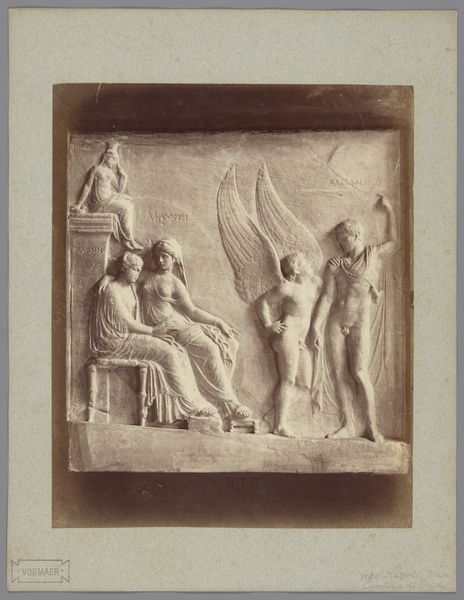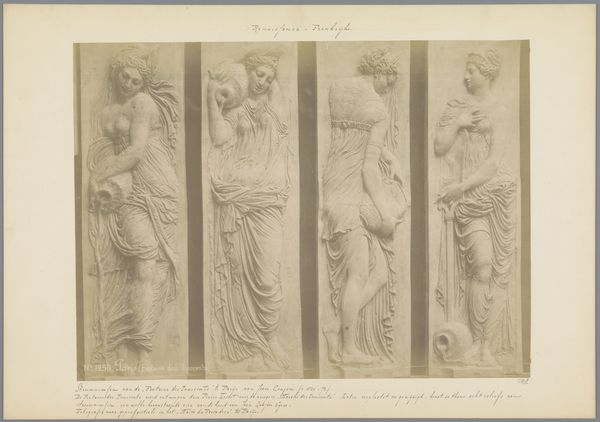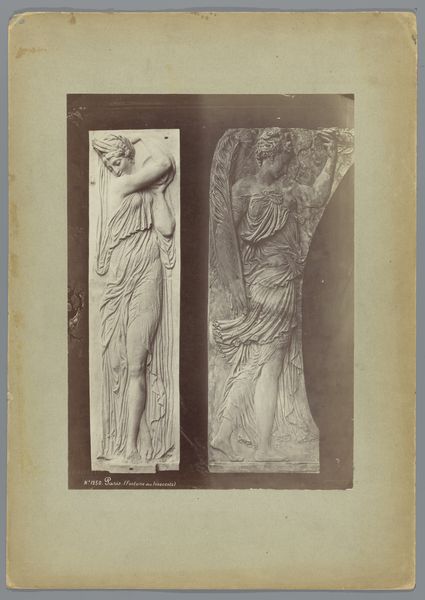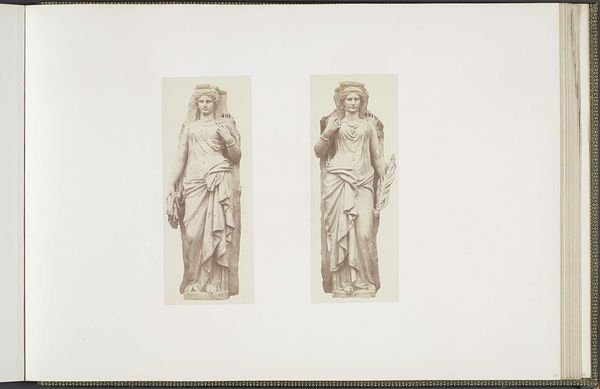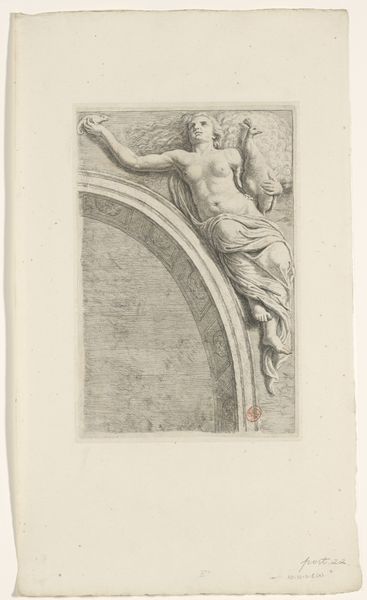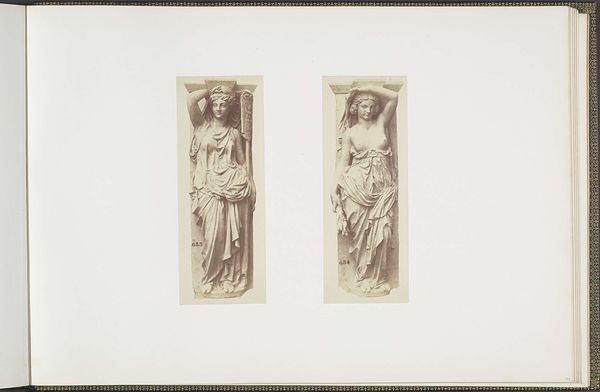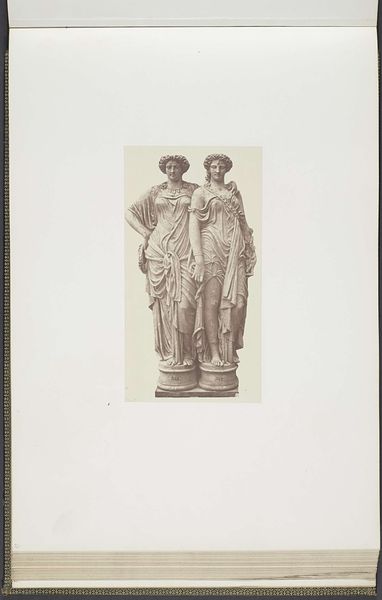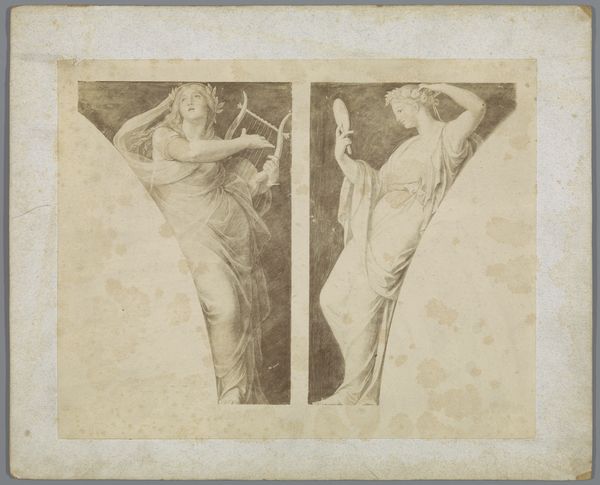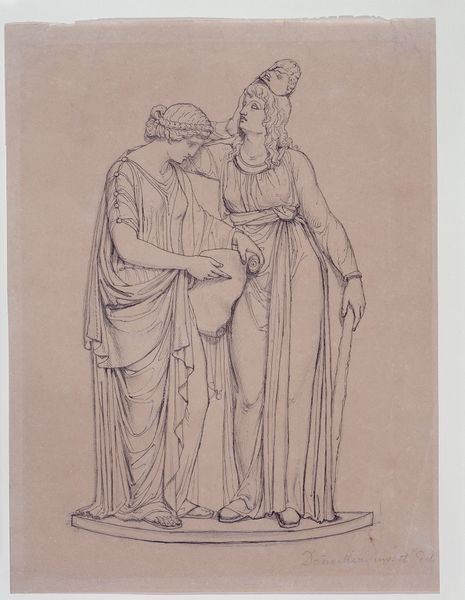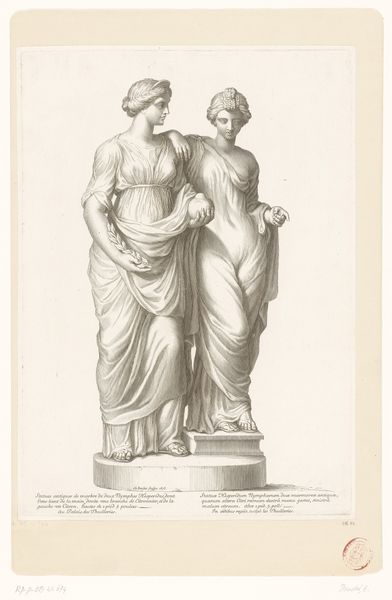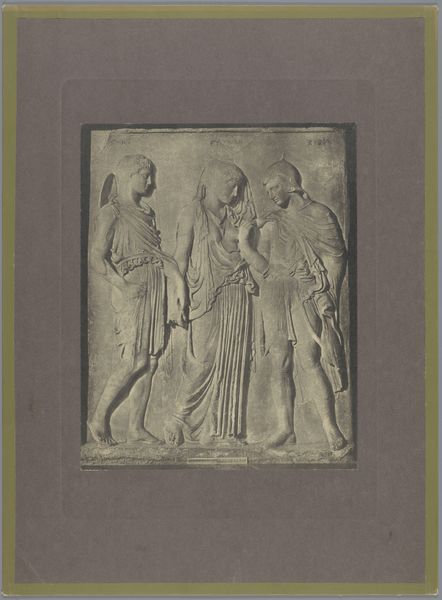
Twee reliëfs van de Fontaine des Innocents te Parijs, voorstellende twee vrouwen met waterkruiken c. 1875 - 1900
0:00
0:00
photography, sculpture, albumen-print
#
portrait
#
allegory
#
photography
#
sculpture
#
history-painting
#
academic-art
#
nude
#
albumen-print
Dimensions: height 258 mm, width 202 mm
Copyright: Rijks Museum: Open Domain
Curator: This is an albumen print dating from around 1875-1900, created by Adolphe Giraudon. It depicts two reliefs from the Fontaine des Innocents in Paris, showing women with water jugs. Editor: The sepia tone lends it a beautiful, aged quality. The figures seem so gracefully posed, yet the overall effect feels somewhat melancholic. Curator: Yes, and consider the labor involved. The photograph reproduces relief sculptures; we are twice removed from the initial material act of carving stone. This highlights a shifting understanding of reproduction, and how photographs were circulating sculpture to new audiences. What does it mean to handle this art as a consumer object? Editor: The Fontaine des Innocents has quite a history, you know. It was originally commissioned for the entrance of Paris in the 16th century, then moved and rebuilt. Reproducing parts of the Fountain through photography shows an active process of redefining its place in the French cultural identity of the time, no? Curator: Precisely! The photograph mediates the Fountain to the late 19th-century viewer, it invites new interpretation. But I can't help thinking, how many hands touched this print, shaping its final form? Who mixed the chemicals, posed the camera, selected the paper? Editor: It’s interesting that this object gives visibility to the figures detached from their urban context. Removed from the public space, they become pieces viewed in domestic settings or private collections, right? What political message does this displacement serve? Curator: Absolutely. And consider that albumen printing used egg whites – another organic substance inextricably linked to the artistic process here. I think it invites us to challenge boundaries between the preciousness of 'high art' and everyday materiality. Editor: The contrast of the marble-like skin with dark background definitely spotlights classical beauty in modern eyes, even idealizes the subjects. Yet this focus perhaps also suggests who, institutionally, decided the parameters of beauty at the turn of the century. Curator: A wonderful way to put it. Considering production, reception, and photographic reproduction – together – that’s how the image speaks to broader conditions, still today. Editor: It surely gives a lot to unpack; it is wonderful to see the historical context mingling with art in material processes.
Comments
No comments
Be the first to comment and join the conversation on the ultimate creative platform.

